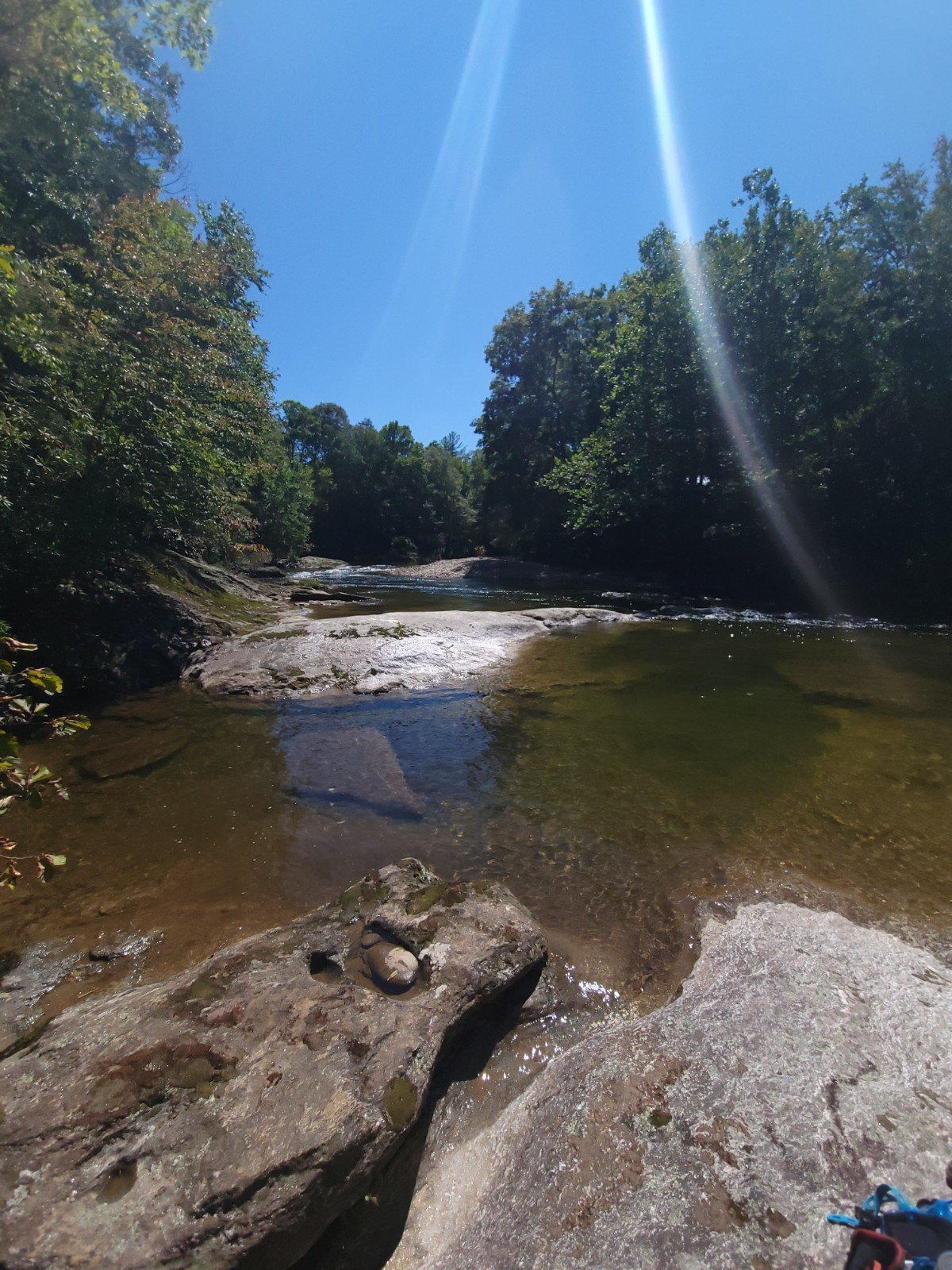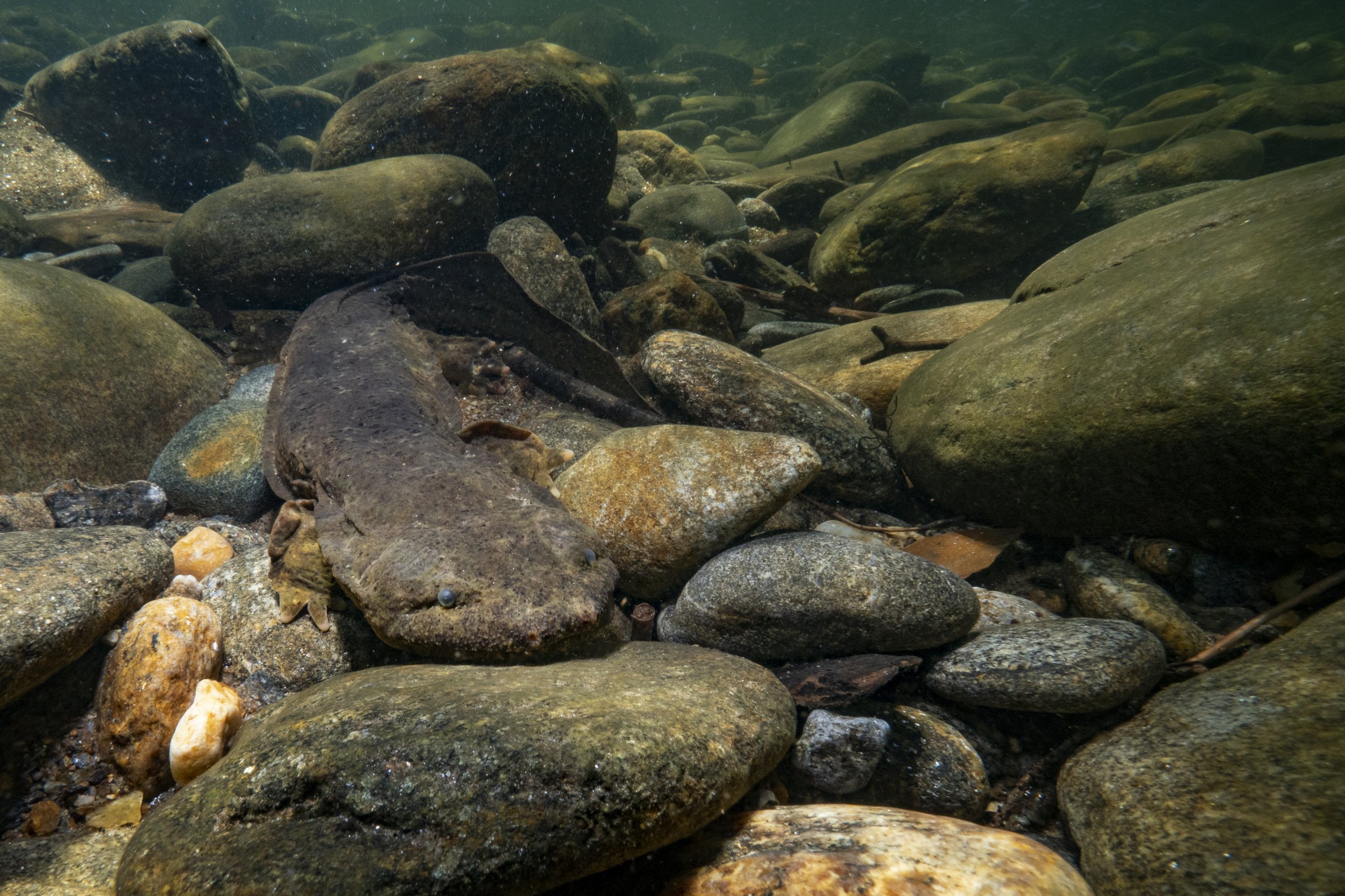Filming hellbenders with Defenders of Wildlife
Co-founder Justin Grubb traveled to North Carolina to work with Defenders of Wildlife to help tell their story about the work they do with local partners to preserve hellbender salamanders. In order to get footage of this highly secretive animal, Justin had to spend more than six hours a day for four days in cold North Carolina streams snorkeling and looking for small heads peering from underneath rocks. The water was extremely cold, but the reward of seeing hellbenders in the wild was worth it. Every year, hellbender males come out from underneath their rocks and fight one another for the opportunity to mate, making them visible for a brief period of time during the year. This is when filming was done.
More about Hellbenders
Hellbenders are important for the ecosystem due to their role as indicators of water quality. As fully aquatic amphibians, they are highly sensitive to pollutants and habitat degradation, making them reliable indicators of the overall health of freshwater systems. Hellbenders also play a significant role in maintaining the balance of aquatic ecosystems as both predators and prey. Unfortunately, they are considered endangered primarily due to habitat loss, water pollution, and disease. Factors such as dam construction, sedimentation, and chemical contamination have significantly reduced their population numbers. Conserving hellbenders is vital for the health of freshwater ecosystems, as their presence signifies clean and healthy waterways and helps sustain the delicate web of life that depends on these vital habitats.
More about Defenders of Wildlife
Defenders of Wildlife is a nonprofit organization based in the United States that focuses on protecting and restoring imperiled species and their habitats. Founded in 1947, their mission is to advocate for wildlife conservation through legal action, policy initiatives, scientific research, and on-the-ground projects. Defenders of Wildlife works to safeguard endangered species, including predators like wolves and big cats, and strives to promote coexistence between wildlife and human communities. They also engage in public outreach and education to raise awareness about the importance of wildlife conservation and the need for sustainable practices.



